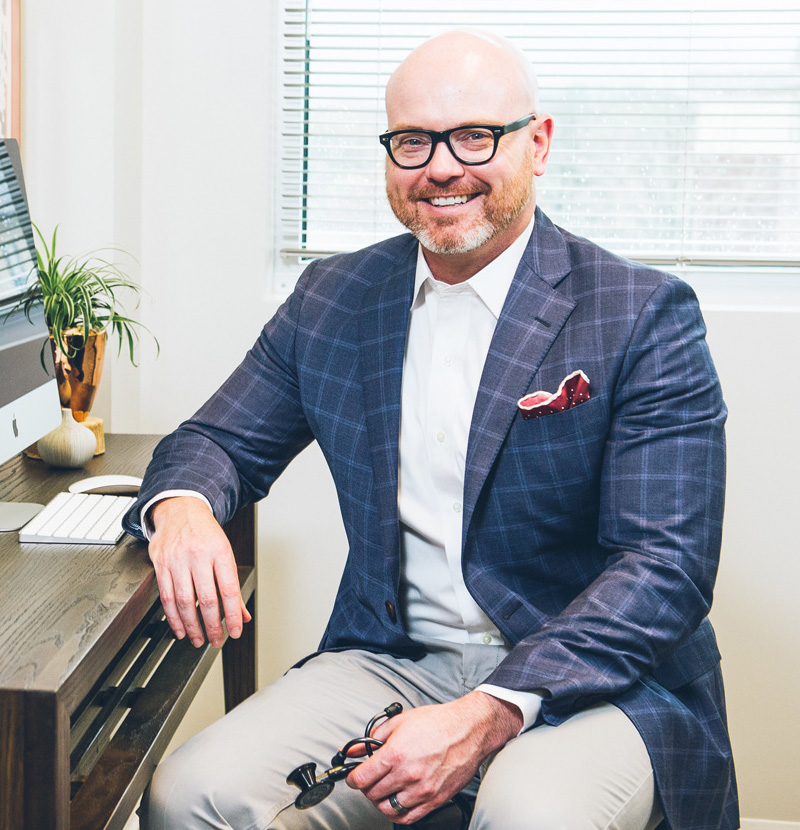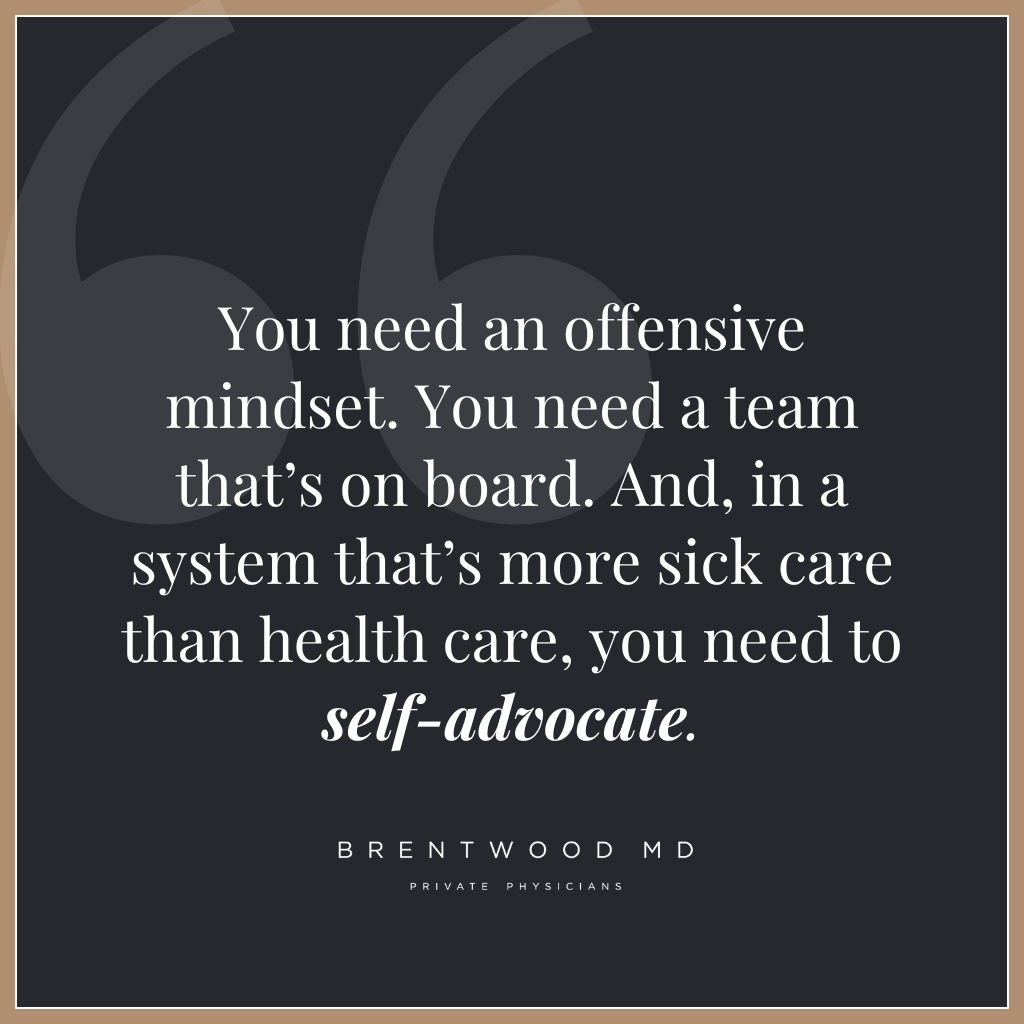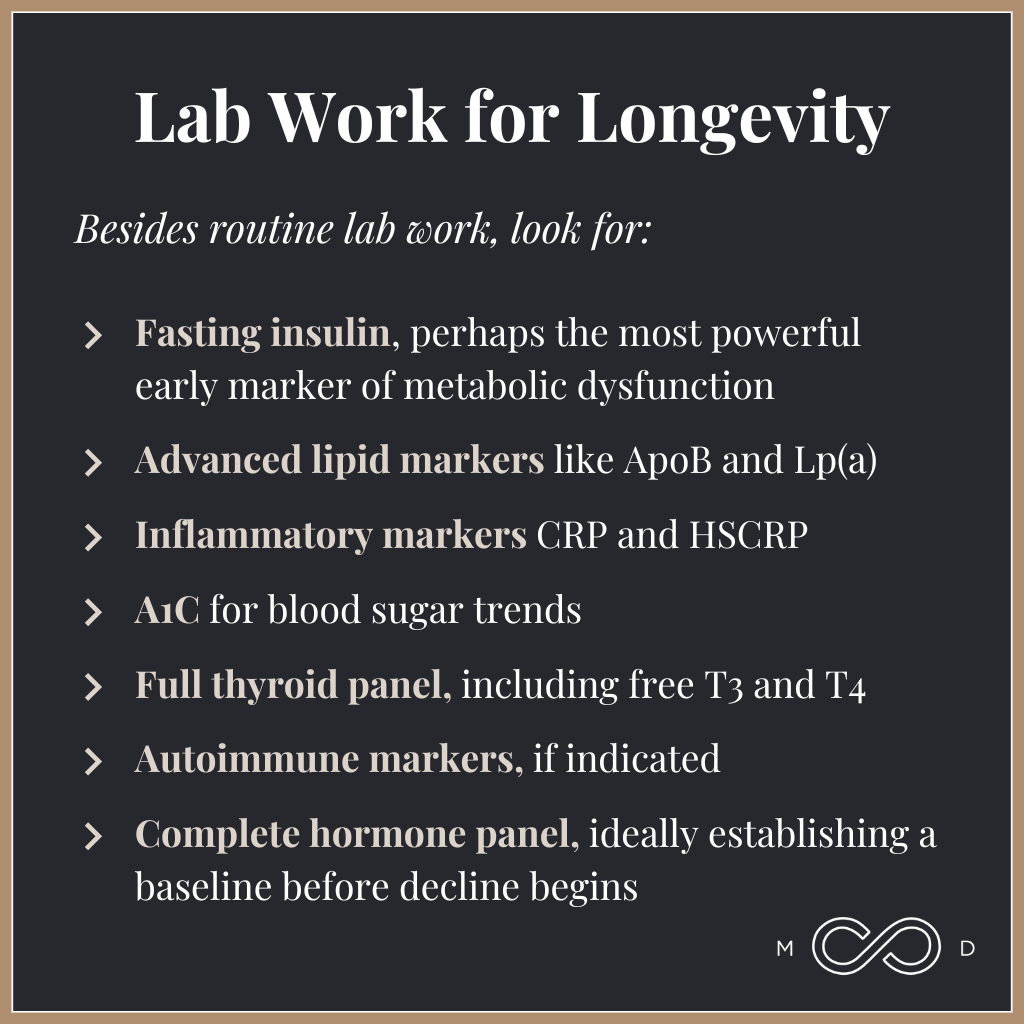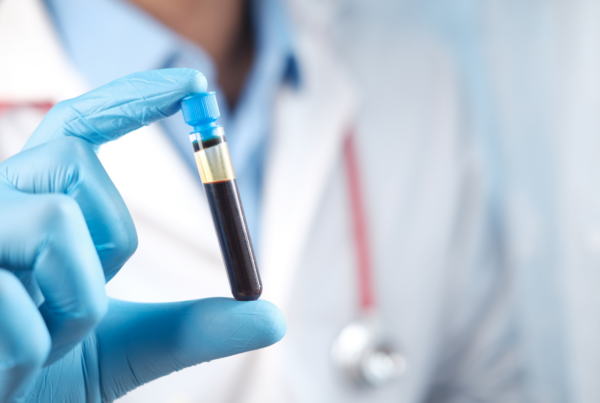Download file | Play in new window | |
We’ve reached the end of sitting back and waiting for a doctor to tell us how to be healthy.
If you want a shot at a long and vibrant life, you have to take ownership of your health now — not when something breaks. The patients I see making the most meaningful progress are those who are loudest about their own goals, values, and ambitions. They don’t outsource responsibility. They show up with intention and curiosity, and they build a team that’s aligned with where they’re going.
That kind of alignment matters. When you and your doctor are working in sync — thinking ahead, chasing the right targets, checking the right markers — you get a frictionless partnership with a high likelihood of great outcomes.
Because here’s the truth: Passive, reactionary medicine is no longer good enough.
You need an offensive mindset. You need a team that’s on board. And, in a system that’s more sick care than health care, you need to self-advocate.
The Crisis of Passive Healthcare
Most of our current medical system is built to react to disease, not prevent it.
By the time a conventional doctor picks up on something in your labs, the disease process has likely been unfolding for years. Especially when it comes to metabolic health, the standard lab work just isn’t designed to catch the early warning signs. Worse, most physicians haven’t been trained to recognize what “early” even looks like.
That’s a problem. Because of the top 10 causes of death in the U.S., seven are directly or indirectly tied to a slow-growing problem: metabolic dysfunction.
You don’t wake up one day with diabetes, or cancer, or cardiovascular disease. These conditions brew in the background, often silently, for years and even decades. But our current healthcare system is only designed to react to them at the crisis point.
If you’re serious about longevity, the most obvious place to start is to avoid or delay the diseases most likely to take you off the planet early.
And the key to doing that is paying attention to your metabolic health.
Metabolic Dysfunction: The #1 Health Crisis on the Planet
No single factor correlates more with early death, chronic disease, and diminished quality of life than metabolic dysfunction. And the core of metabolic dysfunction is insulin resistance. If you can prevent, or at least significantly delay, insulin resistance, you dramatically alter your health trajectory.
Let me put it plainly: Outside of not smoking, the single greatest thing you can do to add meaningful, high-quality years to your life is to optimize your metabolic health.
But we’re not exactly set up for success. As humans, we’re omnivores. We can eat just about anything, and we’re drowning in options. Combine that with a world where whatever you want can be at your doorstep in an hour or less, and you have no friction between desire and outcome.
Further compounding the problem is the fact that our energy outlay as a species is as low as it’s ever been. It’s never been easier to be a human being, ever. Yes, we have a lot of problems today, but they’re higher order problems. It used to be really, really hard just to stay alive as a human being.
And then you have the problem of “new” foods. Historically, diseases like type 2 diabetes, fatty liver, and even cancer were rare. Now they’re everywhere. And when you consider that 60% or more of the average American’s diet is made up of ultra-processed foods — refined carbs, seed oils, and sugars — our bodies are struggling under a burden of oxidative stress they’ve never known before.
The whole notion that humans can live a long time is a relatively new concept. When you combine our ability to live longer with factors like food abundance, ultra-processed diets, and lack of movement, our healthcare system simply isn’t meant to handle it.
The current system has become hyper-optimized for disease management. It doesn’t make you healthy; it just keeps you from dying. It offers lots of drugs and treatments and protocols to keep you alive, but it isn’t built to make you healthy.
So what can you do?
A lot of billion dollar companies would have you believe the solution is to buy their amazing new quick fix product. But, really, we just need a return to basics.
Eat more of better. Eat less of bad. Move more. Get eyes on your numbers earlier.
The basics — along with a little help from modern tools, tests, and tactics — can absolutely change the trajectory of your health.
Let’s talk about what that looks like.
The Right Way to Train for Longevity
My friend Zane Griggs — author, longtime trainer, and expert health coach — makes a compelling observation: When it comes to exercise, most people either do nothing… or way too much.
On one hand, we’ve got sedentary people whose insulin sensitivity is tanking by the day. On the other, we’ve got high-stress exercisers chasing exhaustion like it’s a badge of honor — and creating inflammation, cortisol spikes, sleep disturbances, and visceral fat as a result.
There’s a better way. The goal is metabolic resilience, not burnout.
He recommends strength training two to three times per week, sprint work every 7–10 days, and lots of low-intensity movement in between. Think Zone 2 cardio: walking, biking, pickleball, yard work. Just stay in motion. Let your body burn fat and build mitochondria without depleting your hormones.
Most people don’t realize you can get more metabolic benefit from walking on a treadmill at a 12% incline at 3.0 mph than from sprinting — and without the wear and tear. Our bodies are made for functional movement like walking. In fact, Zane recommends against punishing exercise like marathon running for 95% of people. The benefit simply isn’t worth the cost.
When talking about longevity, we can’t forget mobility. The number one threat to independence after age 65 is falls. And this isn’t from exciting activities like mountain biking. It’s from tripping over a curb or a chair. Most falls occur in the bathroom, getting on or off the toilet or in and out of the shower.
We take these activities of daily living for granted when we’re young, but we need to actively maintain our ability to perform them as we age.
So, rather than pushing toward extremes in one area (like running), it’s worth spending time on varied movement. Can you get up off the floor without assistance? How’s your balance? Your range of shoulder motion? We often don’t consider these more basic elements of fitness until we don’t have access to them anymore. But the best way to have them in old age is to never lose them.
I worked 13 years in emergency medicine, and I saw how these factors play out. At the end of life, the ability to walk across the room or bend down and tie your shoes is worth more than anything money can buy.
Hormones: The Overlooked Engine of Vitality
Our hormones peak somewhere between ages 17 and 25. You don’t need to be an athlete to feel the shift around 30 or 40. You start noticing recovery takes longer, injuries pop up more easily, energy dips, motivation fades.
The difference? Your hormonal environment.
For men, testosterone levels decline. For women, the transition through perimenopause and menopause brings a sharp drop in estrogen, progesterone, and testosterone — often over just a few years. The downstream impact to brain health, cardiovascular risk, bone density, and sexual well-being is massive.
And yet hormone optimization is rarely talked about in conventional care.
Outdated and poorly constructed research like the Women’s Health Initiative from the ‘90s spooked providers and set women’s health back decades. To this day, we don’t have an FDA-approved testosterone therapy for women. Some providers won’t even discuss it.
That’s not healthcare.
I’ve seen what happens when hormone therapy is done well. Women feel like they get their life back, couples reconnect, energy returns, muscle rebuilds. You’re not trying to become someone you never were. You’re getting back to the healthiest version of you.
Not everyone needs hormone replacement therapy. But everyone deserves the ability to have that conversation with a doctor who understands the difference between “normal” — in a sea of people with hormone decline — and “optimal.”
Lab Work That Actually Tells You Something
To reach for longevity, you need data that actually matters, which involves a little more than your usual lab panel.
On top of routine lab work, here are some of the tests we recommend:
- Fasting insulin, perhaps the most powerful early marker of metabolic dysfunction
- Advanced lipid markers like ApoB and Lp(a)
- Inflammatory markers CRP and HSCRP
- A1C for blood sugar trends
- Full thyroid panel, including free T3 and T4
- Autoimmune markers, if indicated
- Complete hormone panel, ideally establishing a baseline before decline begins
If you’re getting these tests, you’re in the 99th percentile of proactive health management.
New Tools for Detecting Top Killers Early
Technology is finally catching up to what longevity-focused medicine needs.
Two tools I recommend — and have no financial interest in — are:
Cleerly Heart Scan
The Cleerly test analyzes the type and location of plaque in your arteries using advanced imaging and AI. It’s light-years beyond the calcium score, which only tells you about calcified (i.e., stable) plaque.
Cleerly identifies the more dangerous soft plaque — the kind that causes heart attacks and strokes when it ruptures. Especially for those over age 50, this is now one of the most powerful cardiovascular tools we have.
Galleri by GRAIL
Cancer is the second-most-likely disease to take you off this planet, yet most of the deadliest cancers have no routine screening.
Galleri is a blood test that screens for cancer signals from over 50 types of cancer, most of which aren’t caught through standard screenings. For these, you don’t get screened until you have symptoms, but by the time you have symptoms the cancer has, by definition, reached a later stage.
Screening with Galleri doesn’t replace colonoscopies or mammograms — two of the five routine cancer-screening tools we already had — but it adds another, much broader, layer of defense.
False positives are possible, which everyone considering Galleri needs to know. The rate is about 1 in 200, which is quite good for a screening test. Still, even I paused for a time. But then I realized that 199 out of 200 people with cancer would find out they had it — and get the chance to act early, when survival rates are highest.
Even in our boutique practice here in Brentwood, Galleri has already saved lives.
So What Do You Do With All This?
So now you know about hormone optimization, deeper lab testing, and innovate new tools. What do you do now?
Unfortunately, you’re not going to find most of these in traditional practices. Our modern sick care system isn’t set up to help you find tools to optimize your health.
This is where self advocacy and an offensive-mindset make such a difference. If you’re driven to do your own research, to look at and vet the data, you’ll be able to move forward with the options and opportunities that align with your personal goals.
Remember, with most of these tools existing outside the established system, it’s a bit like the Wild West. Be cautious of anyone selling you a miracle cure. Use your instincts. Learn to recognize the difference between thoughtful innovation and flashy nonsense.
Longevity and wellness are getting a lot of attention right now. Lots of influencers are making claims, experimenting with their own bodies, and using social media to promote their efforts. It’s okay to be interested, but proceed with caution. Watch how it goes. Often, I find that what makes a huge splash one year fades out by the next when side effects or short-term effects are exposed. So wait. Be patient. And be wary, especially of anything that claims you can stop putting in effort: effort into nutrition, movement, sleep, or any other vital area of life.
If you have the means, find a doctor who knows the terrain. Build a team aligned with your values and goals. Track the right metrics. Take ownership and play offense.
Longevity and Dying Well
Longevity isn’t about avoiding death forever. It’s about not letting something avoidable take you off this planet early, and it’s about maximizing the time you get.
But in the end, of course, we all reach death eventually.
As a former ER doctor, I’ve witnessed thousands of deaths and hundreds of ways to die. I can tell you, a “good” death is one that’s pain-free and at peace.
One of the byproducts of avoiding the top killers above is you experience a lot less pain and regret at the end. And in the meantime, you tend to enjoy a more peaceful, high-quality life.

Dr. Aaron Wenzel is a concierge physician specializing in the care of fast-moving entrepreneurs, executives, and public figures in the Nashville, TN area. Dr. Wenzel’s diverse life experience and extensive training in family medicine, emergency care, nutrition, and hormone replacement therapies give him the unique platform to provide unmatched care for his patients.









